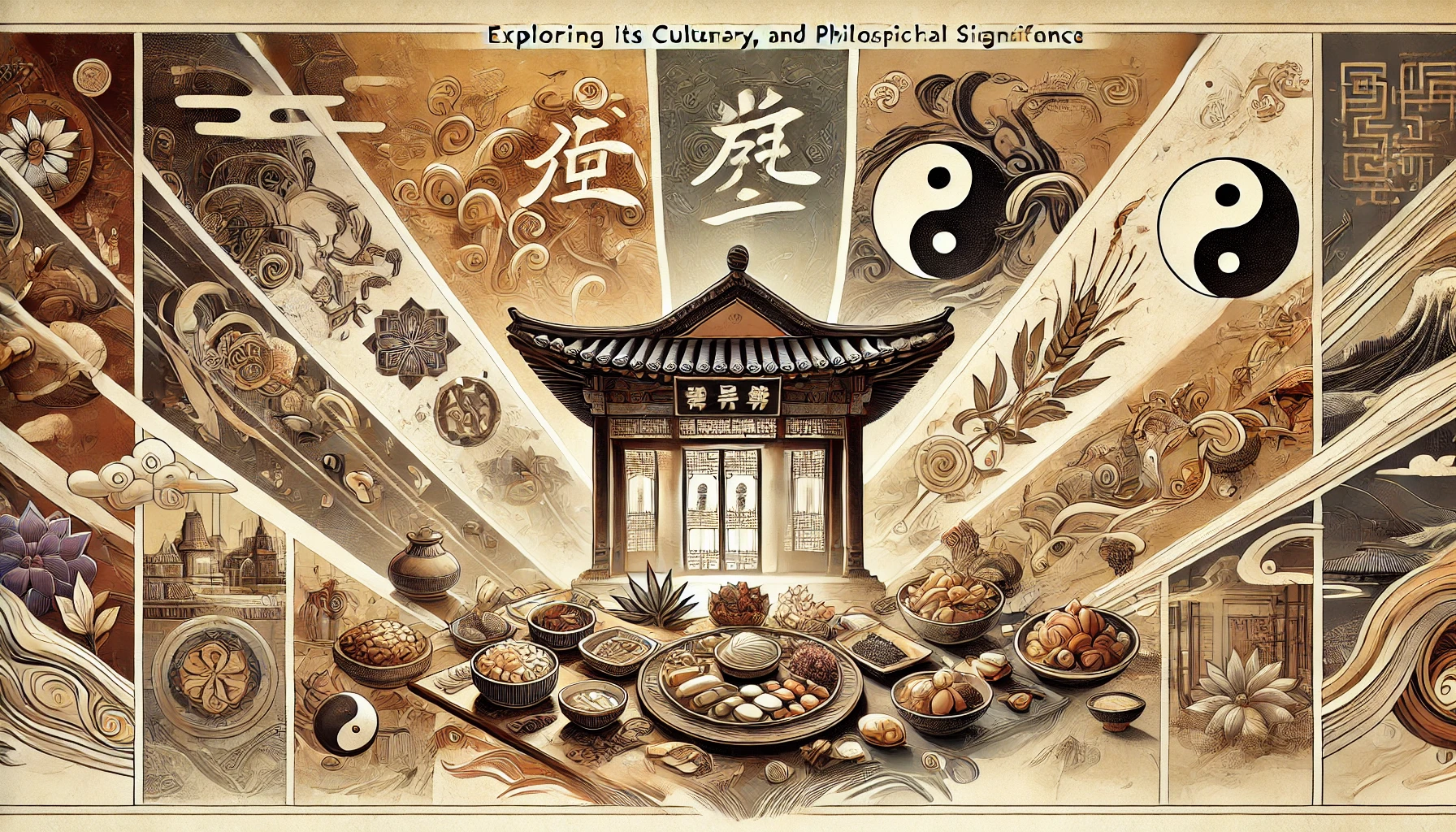Anheihe is a term that encompasses deep cultural significance, primarily rooted in traditional Chinese cuisine. However, its influence extends beyond the kitchen, symbolizing broader themes of unity, balance, and prosperity. Known for its rich and distinctive flavors, Anheihe has evolved from a humble dish prepared by rural communities to a celebrated delicacy enjoyed on special occasions and festivals. This transformation reflects the journey of many traditional dishes that carry historical, cultural, and even medicinal meanings.
The Culinary Essence of Anheihe
What is Anheihe in the culinary world? At its core, Anheihe is a dish characterized by a blend of meats, vegetables, and a variety of aromatic spices. It is traditionally prepared using methods such as steaming, braising, or stir-frying, techniques that are staples of Chinese cooking. The dish originated in rural China, where it was created as a nourishing meal using locally available ingredients. Over time, it gained prominence and is now enjoyed worldwide, with various adaptations to suit modern palates.
Ingredients and Preparation
- Meats and Vegetables: The dish typically includes a combination of meats such as pork, chicken, or beef, along with fresh vegetables like mushrooms, bell peppers, and leafy greens. The ingredients are chosen not just for their flavors but also for their nutritional properties.
- Spices and Aromatics: Traditional spices, including ginger, garlic, star anise, and Sichuan pepper, are often used to enhance the flavors, creating a balance of spicy, sweet, and savory tastes.
- Cooking Techniques: Steaming preserves the ingredients’ natural flavors, while braising infuses them with rich, slow-cooked goodness. Stir-frying, a method famous in Chinese cuisine, helps to blend flavors quickly while maintaining a crisp texture for vegetables.
The flexibility of Anheihe’s recipe allows for numerous variations, making it a versatile dish that can adapt to different tastes and dietary preferences. This adaptability has helped Anheihe spread beyond its traditional roots, finding a place in fusion cuisines across the globe.
Historical Journey of Anheihe

Historically, Anheihe originated as a peasant dish in rural China, prepared from readily available ingredients. It was simple, nutritious, and easy to cook, making it a staple for families in agricultural communities. As it gained popularity, it started appearing on tables during festivals and special events, symbolizing unity, prosperity, and communal well-being.
Over the centuries, Anheihe transformed from a rural delicacy to a dish that is now synonymous with celebration. Its ability to bring people together over a shared meal has made it an important part of various cultural festivities. During festivals, families prepare Anheihe in large batches, with each ingredient symbolizing different virtues like prosperity, health, and harmony.
Anheihe’s Broader Cultural Significance
What is Anheihe beyond just a dish? The term carries cultural and philosophical undertones that go deeper than its culinary identity. In traditional Chinese culture, Anheihe is seen as a representation of balance and unity, reflecting principles from Taoist philosophy. The preparation and consumption of the dish are considered acts that harmonize the energies of the body, promoting well-being and balance.
Anheihe in Traditional Chinese Medicine (TCM)
In Traditional Chinese Medicine (TCM), food is more than just sustenance—it is a way to maintain health by balancing the body’s energies. Anheihe is believed to promote this balance through its blend of ingredients, each chosen for its specific health benefits. For instance, ginger and garlic, which are common in Anheihe, are known for their anti-inflammatory properties and ability to boost digestion. This aligns with the TCM principle of using natural ingredients to heal and maintain equilibrium within the body.
The philosophy of Yin and Yang—the concept of opposing yet complementary forces—also plays a role in how the dish is perceived. The ingredients are often selected to balance these forces, combining ‘warm’ and ‘cool’ elements to create a dish that nourishes without overwhelming the body’s natural state.
Symbolism and Presence in Arts and Literature
The concept of Anheihe extends to cultural practices, literature, and art, symbolizing ideas of balance, unity, and togetherness. Just as the dish brings together different flavors, textures, and colors, the term has been used metaphorically to depict the harmonious coexistence of diverse elements. In literature, Anheihe is sometimes used as a symbol of unity—whether among family members, communities, or even within nature.
The dish’s appearance in various artworks often highlights its role as a bridge between tradition and modernity. Artists and writers use Anheihe to depict scenes of shared joy and celebration, emphasizing the importance of community and connectedness. These representations ensure that the cultural heritage associated with Anheihe continues to be celebrated and preserved.
Modern Adaptations and Global Influence
As Anheihe gained popularity outside China, chefs worldwide began to introduce new twists to this traditional dish. Modern culinary practices have led to innovative versions, integrating local ingredients and flavors to suit regional tastes. For example, in some fusion restaurants, chefs might incorporate Anheihe’s traditional flavors with Western cooking techniques, creating a unique blend of cultures on a single plate.
These global variations demonstrate the versatility of Anheihe and its ability to adapt while maintaining its core essence. The spread of the dish has helped introduce people worldwide to traditional Chinese flavors, fostering a greater appreciation for the cultural depth and diversity of Chinese cuisine.
Anheihe: More Than Just a Dish
What is Anheihe if not a representation of something greater than its ingredients? It symbolizes the values of unity, harmony, and tradition. Its enduring popularity is a testament to how a simple dish can carry profound meanings across generations. The philosophy embedded in Anheihe reflects broader cultural beliefs, resonating with people far beyond the borders of its origin.
Connection to Taoist Philosophy
One of the key reasons why Anheihe holds such a special place in Chinese culture is its connection to Taoism. The philosophy of Taoism emphasizes living in harmony with nature, simplicity, and balance. These concepts are mirrored in the preparation and presentation of Anheihe. Each element in the dish—whether it is a spice, a vegetable, or a method of cooking—plays its part in creating a harmonious whole, much like the Taoist ideal of achieving balance in life.
This philosophical connection has helped sustain Anheihe’s cultural relevance, allowing it to be seen not merely as food, but as a practice that brings balance to one’s life and surroundings.
The Future of Anheihe in Contemporary Society
As we move further into a globalized era, the ways in which we enjoy traditional dishes like Anheihe are evolving. While it remains a cherished part of festivals and celebrations, its flavors and preparation techniques are finding new life in contemporary kitchens. More than ever, chefs are experimenting with Anheihe, making it a centerpiece in fusion cuisines and exploring its flavors in new contexts.
There is also a growing interest in Anheihe as a symbol of sustainable and healthy eating. With its emphasis on fresh ingredients and balanced flavors, the dish aligns with modern trends of mindful eating. This ensures that Anheihe will continue to find relevance in a rapidly changing culinary landscape.
Conclusion
In essence, what is Anheihe? It is a dish, a symbol, and a concept that embodies unity, balance, and cultural richness. Rooted in traditional Chinese cuisine, it has grown to become a dish celebrated worldwide, with its flavors and symbolism transcending geographical boundaries. Beyond the table, Anheihe signifies harmony, a core value of Chinese culture and philosophy.
Whether enjoyed at a family gathering, used as a metaphor in literature, or adapted into a modern culinary creation, Anheihe continues to tell a story of tradition, culture, and togetherness. It is a perfect example of how ancient practices can evolve while maintaining their essence, connecting the past with the present.
Here is Our Latest Article: What is Imacion: A Comprehensive Digital Platform for Creativity and Productivity in 2024
